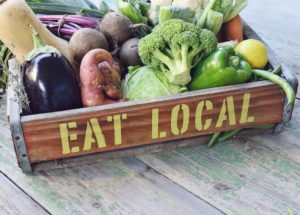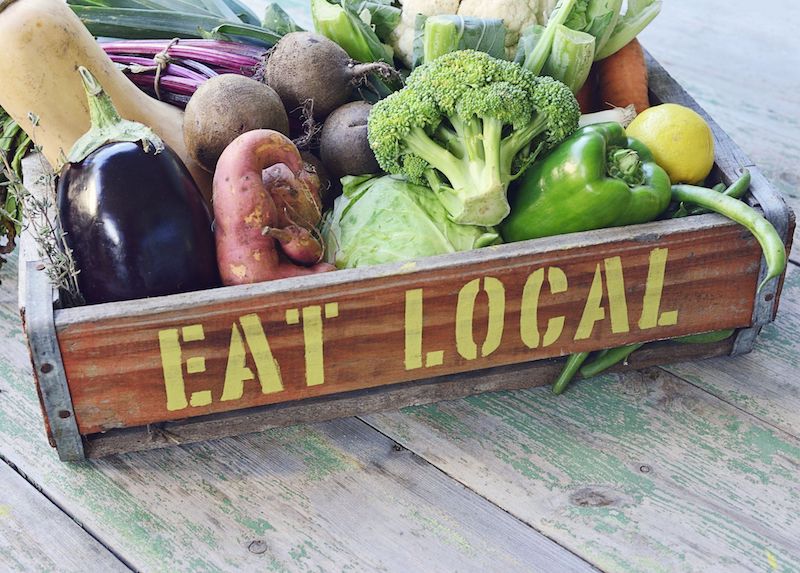 In case you’re wondering, ‘locavore’ is a made-up word for people who try to eat only locally produced foodstuffs.
In case you’re wondering, ‘locavore’ is a made-up word for people who try to eat only locally produced foodstuffs.
Even die-hard locavores still start their morning with a ‘cuppa.’ And it’s usually coffee or tea; coffee is always imported, and the tea which is locally produced from Camellia sinensis is mostly sold to tourists as a novelty.
But this column is to redress a botanical wrong – a deliberate one, it seems. The botanical name of our native Yaupon Holly is Ilex vomitoria. William Alton, the botanist who named it, is thought to have named the species ‘vomitoria’ to discourage colonists from making tea from the plant; the practice of indigenous peoples in the Americas for centuries. Alton is believed to have been responding to pressure from the East India Company, who had a virtual monopoly on imported tea. Remember the Boston Tea Party?
Well, it worked. Even the Oxford English Dictionary still says that the leaves of Yaupon Holly have emetic or purgative properties. Simply not true. Even though nowadays most descriptions of the shrub acknowledge that it does not actually produce vomiting, the myth persists.
I even echoed it in a column I wrote! How easy it is to spread misinformation.
But locavores rejoice. Yaupon or ‘Cassina’ tea is making a come-back. And here is the really good news. Some cultivars of Yaupon have almost as much anti-oxidant power as green tea! Yaupon tea has less caffeine than coffee, but studies are being made on how to increase both the anti-oxidants and caffeine percentages in specific cultivars.
There are lots of sources for Yaupon Tea online. You may even find it in some supermarket chains.
But if we have a Yaupon Holly in our back yard, is it safe to make tea from it? The simple answer is ‘yes,’ but even excess amounts of regular coffee or tea can have an emetic effect. So if taken in the same quantities as you usually use for your caffeinated beverages, it’s perfectly safe. BUT, don’t use leaves from a plant which has been treated with any kind of chemicals! And for sure don’t be tempted to use the berries. All holly berries are toxic to humans.
The leaves can be harvested and naturally left to dry, or can be roasted – just like coffee beans or regular tea leaves. A teaspoon of the dried or roasted leaves, steeped in boiling water, will produce a drink similar in flavor to green tea. You can even harvest and dry leaves from citrus trees to use to flavor the tea, or just use them alone to make a tangy citrus flavored tea!
Locavores can make ‘tea’ from a lot of plants. Lemon Grass, for one. And did you ever make rose hip tea? Maybe your Grannie or Great Grannie did, but I doubt that any of your contemporaries did. And how many of you have been brave enough to make Pindo Pine jelly? I looked at a recipe and what stood out was the amount of sugar it took. Diabetic nightmare.
I scrape the woody pith from citrus peels and leave them to dry on my window sill. Kept in an air-tight container, I use them to flavor not only hot beverages, but I add them to carrots, sweet potatoes, soups and stews. Once dried, you can blitz them into a powder, too, which stores just as well, and it’s easy to incorporate into dishes and baked goods.
You don’t need to have a veggie garden or an orchard to have your own locally grown edibles. There are many edibles that are perfectly at home in your flower beds. Herbs, especially, are quite ornamental. Citrus trees can produce bountiful harvests from potted trees, and won’t take up a lot of space on your patio. I have blackberry canes twining themselves through a small citrus tree. One stop shopping for pollinators.
Those ‘strawberry jars’ with the several openings around them actually work. The tiny alpine strawberries thrive and their flavor is much more intense than the larger ones. You can buy seeds and treat them as annuals.
Have you priced pine nuts lately? They seem to be the caviar of horticultural foods. All pine trees produce edible nuts, but our Lowcountry pine trees don’t seem to make cones large enough to make it worthwhile.
And yes, some weeds are edible. Purslane is prized by the French as a salad green, the roots of Florida Betony are sometimes called the ‘Florida radish,’ and even my personal nemesis, Chamberbitter, is edible. But not by me.
One of my favorite mid-summer strolls is with a bowl of cereal in the morning, stopping by the blackberry canes and plopping a few fat, ripe ones into the bowl. Just FYI, the ‘Apache’ cultivar has berries as big as your thumb and no thorns! And those awful wild brambles, the ones that are so invasive and prickly, actually do make tiny sweet berries. Not that they would ever be welcome in my back yard!
But we can all be a little bit locavoral (now that probably isn’t a word) by using our creativity when planning our gardens and opening our minds to new adventures in what can be edible. I’m told that the bravest man in the world was the one first to eat a raw oyster!
Gets my vote.








